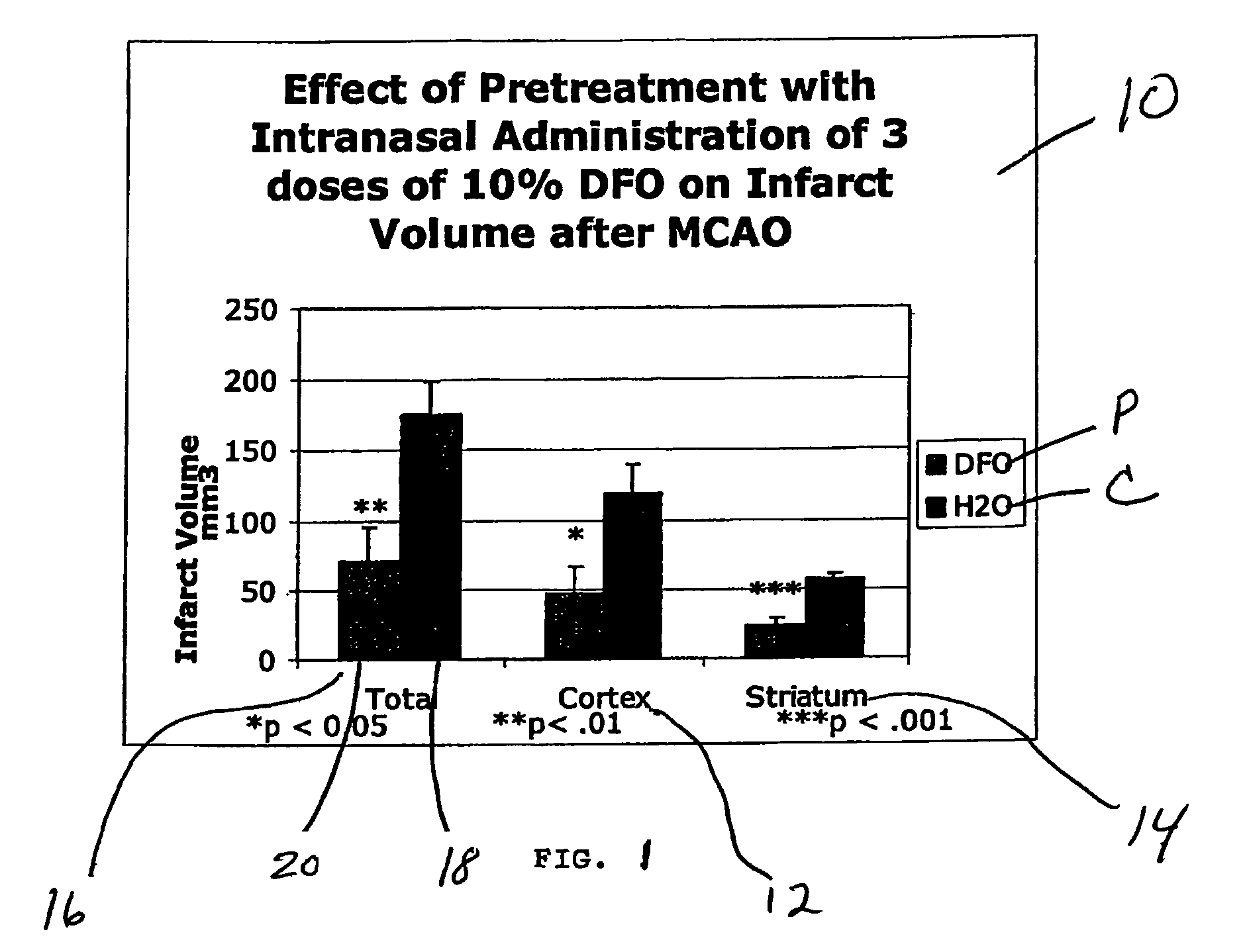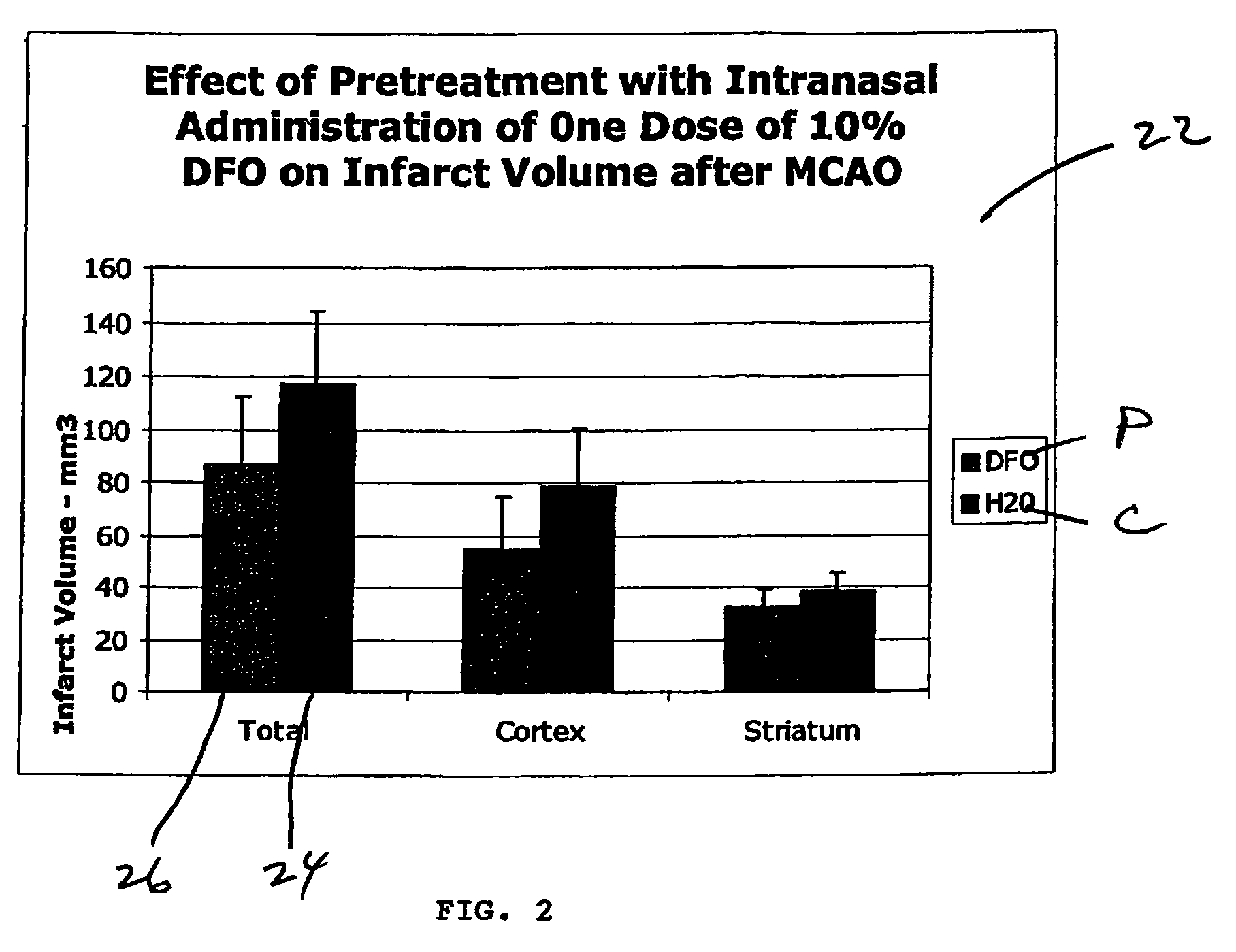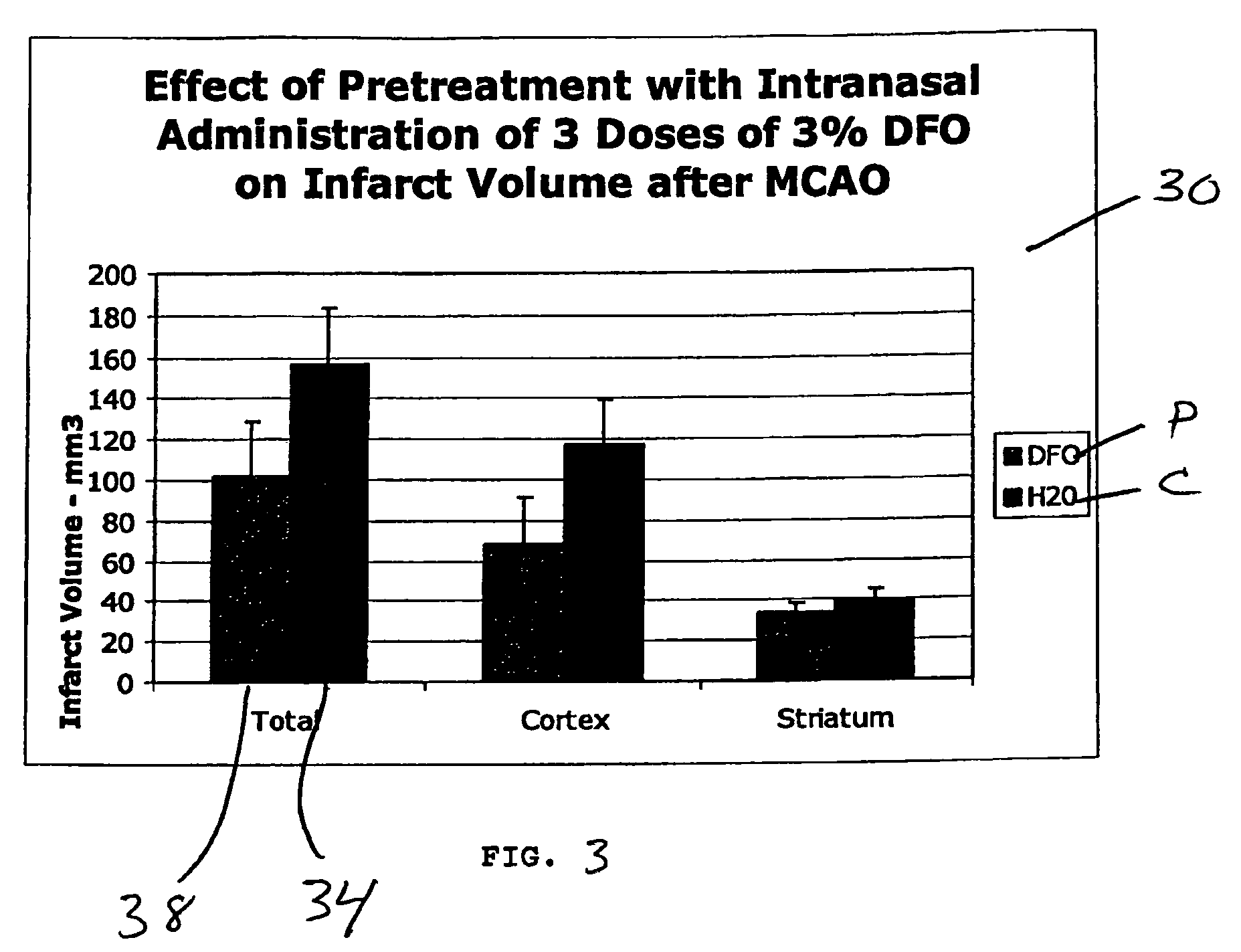Method of treating Alzheimer's disease comprising administering deferoxamine (DFO) to the upper one-third of the nasal cavity
a technology of deferoxamine and nasal cavity, applied in the direction of biocide, drug composition, peptide/protein ingredients, etc., can solve the problems of neurological complications of cabg procedures, physical and behavioral impairment in some cabg patients, and the general implication of potentially harmful procedures as cardiopulmonary bypass procedures, etc., to prevent, minimize and/or treat neurologic complications, prevent oxidation/reduction cycling of iron or copper, the effect of minimizing and/or treating
- Summary
- Abstract
- Description
- Claims
- Application Information
AI Technical Summary
Benefits of technology
Problems solved by technology
Method used
Image
Examples
Embodiment Construction
[0048]While the invention is amenable to various modifications and alternative forms, specifics thereof are shown by way of example in the drawings and described in detail herein. It should be understood, however, that the intention is not to limit the invention to the particular embodiments described. On the contrary, the intention is to cover all modifications, equivalents, and alternatives falling within the spirit and scope of the invention.
Definitions
[0049]As used herein, “central nervous system” (CNS) refers to the brain and spinal cord and associated tissues.
[0050]As used herein, “neurological disorder” comprises conditions involving ischemia, i.e., cerebral ischemia, ischemia, stroke, neurodegeneration, neurological complications arising from coronary bypass surgery, Parkinson's disease, Wilson's disease, Huntington's disease, amyotrophic lateral sclerosis, Alzheimer's disease, iron and copper toxicity, iron overload in the brain, thalassemia, metal poisoning of the central ...
PUM
| Property | Measurement | Unit |
|---|---|---|
| volume | aaaaa | aaaaa |
| volume | aaaaa | aaaaa |
| volume | aaaaa | aaaaa |
Abstract
Description
Claims
Application Information
 Login to View More
Login to View More - R&D
- Intellectual Property
- Life Sciences
- Materials
- Tech Scout
- Unparalleled Data Quality
- Higher Quality Content
- 60% Fewer Hallucinations
Browse by: Latest US Patents, China's latest patents, Technical Efficacy Thesaurus, Application Domain, Technology Topic, Popular Technical Reports.
© 2025 PatSnap. All rights reserved.Legal|Privacy policy|Modern Slavery Act Transparency Statement|Sitemap|About US| Contact US: help@patsnap.com



